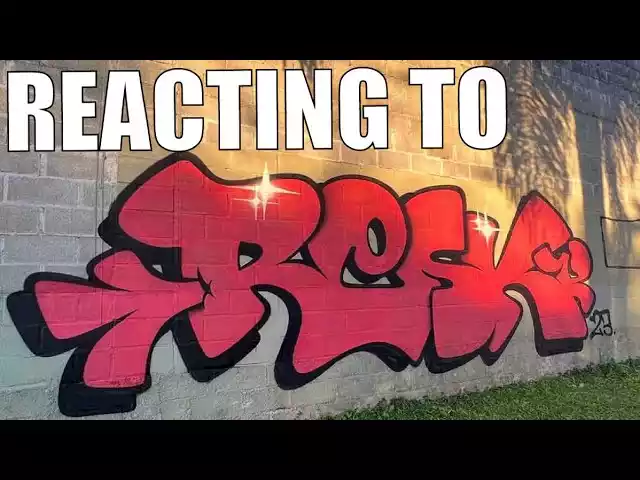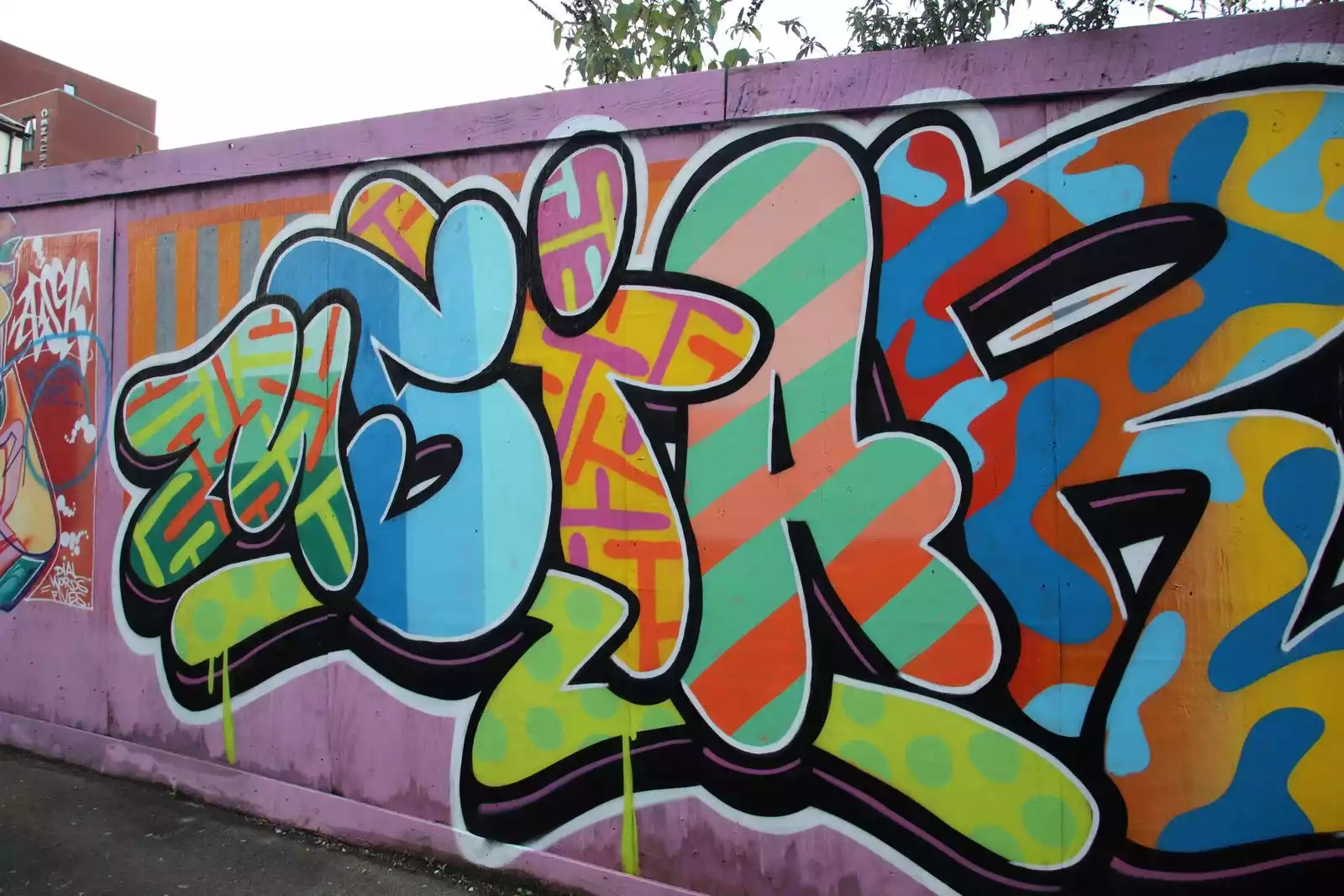Graffiti has long been a subject of debate, often straddling the line between art and vandalism. Yet, its roots trace back to ancient civilizations, where it served as a form of expression and communication. From the cave paintings of Lascaux to the political murals of the Roman Empire, graffiti has always been a medium for the masses. In modern times, it has evolved into a sophisticated art form, recognized and celebrated in galleries and museums worldwide. The vibrant colors, intricate designs, and powerful messages of graffiti make it a unique and impactful form of art.
Historical Context of Graffiti as Art
Graffiti’s history is rich and varied, stretching back thousands of years. Ancient civilizations used graffiti to document their lives, beliefs, and events. For instance, the Romans often inscribed messages and drawings on walls, providing a glimpse into their daily lives and societal norms. These early forms of graffiti were not just random scribbles but carefully crafted messages meant to communicate with others.
In the 20th century, graffiti re-emerged as a powerful form of expression, particularly in urban areas. The 1970s saw the rise of graffiti in New York City, where it became a voice for marginalized communities. Artists like Taki 183 and Cornbread used graffiti to make their mark on the city, turning public spaces into canvases for their art. This era marked the beginning of graffiti as a recognized art form, with its own styles, techniques, and cultural significance.
Graffiti in Contemporary Art
Today, graffiti has firmly established itself in the contemporary art scene. Artists like Banksy, Jean-Michel Basquiat, and Keith Haring have brought graffiti into the mainstream, challenging traditional notions of art and its place in society. Their works, often laden with social and political commentary, have garnered international acclaim and fetched millions at auctions.
Graffiti’s influence extends beyond the streets and into various art forms, including graphic design, fashion, and advertising. Its bold aesthetics and rebellious spirit resonate with a wide audience, making it a powerful tool for communication and change. As graffiti continues to evolve, it remains a testament to the creativity and resilience of those who use it to express their voices.
The Techniques and Styles of Graffiti
Graffiti is not just about spray paint on walls; it encompasses a wide range of techniques and styles that reflect the artist’s skill and creativity. From simple tags to elaborate murals, graffiti artists employ various methods to create their works.
Evolution of Graffiti Techniques

Graffiti techniques have evolved significantly over the years. Early graffiti was often simple and rudimentary, consisting of basic tags and symbols. However, as the art form developed, so did the techniques used by artists. Today, graffiti encompasses a wide range of styles, from wildstyle and bubble letters to stencils and wheatpaste.
Influence of Technology on Graffiti
Technology has played a crucial role in the evolution of graffiti. The advent of spray paint in the 1940s revolutionized the art form, allowing artists to create more intricate and vibrant works. In recent years, digital tools and software have further expanded the possibilities for graffiti artists. Programs like Adobe Photoshop and Illustrator enable artists to design and refine their works before bringing them to life on walls.
Moreover, social media platforms have provided a global stage for graffiti artists to showcase their work. Instagram, in particular, has become a popular platform for graffiti artists to share their creations and connect with a wider audience. This digital exposure has helped elevate graffiti from the streets to the mainstream art world.
Traditional vs. Modern Techniques
While modern technology has introduced new tools and methods, traditional graffiti techniques remain popular among artists. Handstyles, or the unique way an artist writes their name, are a fundamental aspect of graffiti culture. These styles are often passed down from one generation of artists to the next, preserving the art form’s rich history and traditions.
On the other hand, modern techniques like stenciling and wheatpasting offer new ways for artists to express themselves. Stencils, popularized by artists like Banksy, allow for precise and repeatable designs, while wheatpasting involves adhering posters or prints to surfaces using a wheat-based adhesive. These techniques have expanded the creative possibilities for graffiti artists, enabling them to experiment with different styles and mediums.
Cultural Impact of Graffiti
Graffiti is more than just an art form; it is a powerful cultural phenomenon that reflects the social and political climate of its time. From its origins as a form of protest to its current status as a celebrated art form, graffiti has always been a voice for the voiceless.
Graffiti as a Form of Social Commentary
Graffiti has long been used as a tool for social and political commentary. In the 1970s and 1980s, graffiti artists in New York City used their art to address issues like poverty, racism, and police brutality. These works were often created in marginalized communities, giving a voice to those who were often ignored by mainstream society.
Today, graffiti continues to serve as a platform for social commentary. Artists like Banksy use their work to critique political systems, social injustices, and environmental issues. These pieces often provoke thought and spark conversations, challenging viewers to reconsider their perspectives on important issues.
Graffiti in Popular Culture

Graffiti’s influence extends beyond the streets and into popular culture. From music and fashion to film and literature, graffiti has left its mark on various aspects of contemporary culture. Hip-hop, in particular, has a deep connection with graffiti, with many early graffiti artists also being involved in the hip-hop scene.
In fashion, graffiti-inspired designs have become a staple, with brands like Supreme and Off-White incorporating graffiti elements into their collections. Films like “Style Wars” and “Exit Through the Gift Shop” have documented the world of graffiti, bringing it to a wider audience and cementing its place in popular culture.
Legal and Ethical Considerations
The legality and ethics of graffiti are complex and often contentious issues. While some view graffiti as a form of vandalism, others see it as a legitimate and valuable art form. This debate raises important questions about public and private spaces, artistic freedom, and the role of art in society.
The Debate Over Public vs. Private Spaces
One of the central issues in the graffiti debate is the distinction between public and private spaces. Graffiti is often created on public property, such as buildings, bridges, and trains, without the permission of the property owner. This has led to graffiti being labeled as vandalism and criminalized in many places.
However, many argue that public spaces should be open to artistic expression. They believe that graffiti can enhance the urban environment, adding color and character to otherwise dull and lifeless spaces. Moreover, they argue that criminalizing graffiti stifles creativity and silences important voices.
Legalization and Regulation of Graffiti
In recent years, some cities have taken steps to legalize and regulate graffiti. Designated graffiti zones, where artists can create their works without fear of legal repercussions, have been established in cities like Melbourne, Berlin, and São Paulo. These zones provide a safe space for artists to express themselves while also reducing illegal graffiti in other areas.
Additionally, some property owners have begun to commission graffiti artists to create murals on their buildings. This not only provides artists with a legal outlet for their work but also helps to beautify the urban landscape and attract tourists.
Graffiti as a Medium of Expression
Graffiti is a powerful medium of expression, allowing artists to convey their thoughts, emotions, and identities. It provides a platform for personal and community expression, giving a voice to those who may not have other means of being heard.
Personal Expression Through Graffiti
For many artists, graffiti is a deeply personal form of expression. It allows them to share their thoughts, emotions, and experiences with the world. The act of creating graffiti can be cathartic, providing an outlet for feelings that may be difficult to express in other ways.
Graffiti also allows artists to explore their identities and assert their presence in the world. Through their work, they can communicate their unique perspectives and challenge societal norms. This personal connection to their art makes graffiti a powerful and meaningful form of expression.
Graffiti as a Community Voice
Graffiti is not just a personal expression; it is also a collective one. It often reflects the concerns and aspirations of the community in which it is created. In many cases, graffiti serves as a voice for marginalized communities, addressing issues like poverty, discrimination, and social injustice.
Community murals, in particular, are a powerful form of graffiti. These large-scale works are often created collaboratively, with input from various members of the community. They can serve as a source of pride and unity, bringing people together and fostering a sense of belonging.
Relevant Data Table For The 10 Reasons Why Graffiti is Art
| Reason | Explanation |
|---|---|
| 1. Historical Significance | Graffiti has roots in ancient civilizations, showcasing its long-standing role in human expression. |
| 2. Artistic Techniques | Graffiti artists use complex techniques and styles, similar to traditional art forms. |
| 3. Cultural Representation | Graffiti often reflects the cultural and social issues of the time, making it a powerful medium for commentary. |
| 4. Visual Impact | The vibrant colors and bold designs of graffiti create a strong visual impact, akin to other visual arts. |
| 5. Innovation | Graffiti artists continually push the boundaries of creativity, introducing new styles and methods. |
| 6. Public Engagement | Graffiti is accessible to the public, engaging a wide audience and democratizing art. |
| 7. Personal Expression | Artists use graffiti to express personal thoughts, emotions, and identities. |
| 8. Community Voice | Graffiti can represent the collective voice of a community, addressing local issues and concerns. |
| 9. Artistic Recognition | Many graffiti artists have gained recognition in the art world, with works displayed in galleries and museums. |
| 10. Influence on Other Art Forms | Graffiti has influenced various other art forms, including graphic design, fashion, and advertising. |
FAQs
Is graffiti considered art or vandalism?
Graffiti can be both art and vandalism, depending on the context and legality. When created with permission, graffiti is often celebrated as a legitimate and valuable art form. However, when done without permission, it is considered vandalism and can result in legal consequences. The distinction between art and vandalism often depends on the perspective of the viewer and the intent of the artist.
What are some famous examples of graffiti art?
Several graffiti artists have gained international recognition for their work. Banksy, known for his provocative and politically charged pieces, is one of the most famous graffiti artists in the world. His works often appear in unexpected places, sparking conversations and challenging societal norms. Jean-Michel Basquiat, who started as a graffiti artist in New York City, went on to become a celebrated painter and cultural icon. Keith Haring, known for his vibrant and energetic style, used graffiti to address social issues like AIDS and apartheid.
How has graffiti evolved over time?
Graffiti has evolved significantly over the years, from simple tags and symbols to complex and intricate murals. Early graffiti was often created using basic tools like markers and spray paint. However, as the art form developed, artists began experimenting with new techniques and materials. Today, graffiti encompasses a wide range of styles, from traditional handstyles to modern stencils and wheatpaste. The advent of digital tools and social media has also expanded the possibilities for graffiti artists, allowing them to reach a global audience and push the boundaries of their creativity.
Can graffiti be legally created?
Yes, graffiti can be legally created in designated areas and with the permission of property owners. Many cities have established legal graffiti zones where artists can create their works without fear of legal repercussions. These zones provide a safe space for artists to express themselves and help reduce illegal graffiti in other areas. Additionally, some property owners commission graffiti artists to create murals on their buildings, providing a legal outlet for their work and beautifying the urban landscape.
What materials are commonly used in graffiti?
Graffiti artists use a variety of materials to create their works. Spray paint is one of the most common tools, allowing for quick and vibrant designs. Markers and paint pens are also popular, particularly for creating detailed handstyles and tags. Stencils, made from materials like cardboard or plastic, enable artists to create precise and repeatable designs. Wheatpaste, a mixture of flour and water, is used to adhere posters or prints to surfaces. These materials, combined with the artist’s skill and creativity, result in the diverse and dynamic art form that is graffiti.
Conclusion
Graffiti, with its rich history, diverse techniques, and profound cultural impact, stands as a legitimate and influential form of art. It serves as a medium for personal and community expression, engages the public, and continues to evolve, reflecting the dynamic nature of contemporary art.
Post References:
– “The History of Graffiti” – History.com
– “Banksy: The Man Behind the Wall” – The Guardian
– “Jean-Michel Basquiat: The Radiant Child” – PBS
– “Keith Haring: The Political Line” – SFMoMA
– “The Evolution of Graffiti Art” – Artspace
TOP 10 GRAFFITI VIDEOS OF 2021
Ruth Aquilani is a renowned graffiti artist known for her bold, colorful, and expressive style. She began her career as a street artist in the early 2000s, quickly making a name for herself in the graffiti community with her unique and striking works of art.
